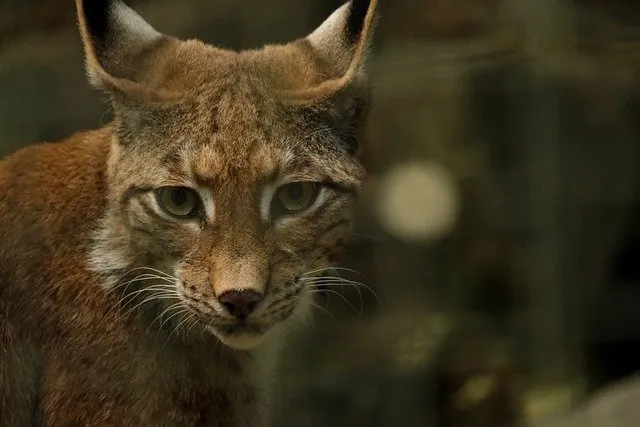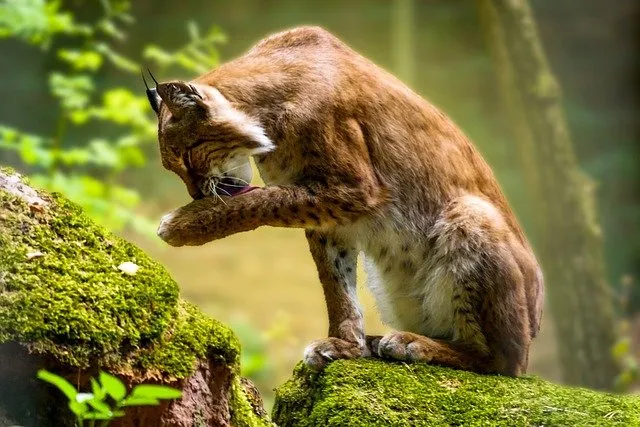As an Amazon Associate I earn from qualifying purchases.
“What do wildcats eat?” This simple question opens the door to a captivating world of carnivorous diets and natural survival strategies. Wildcats, often regarded as elusive and awe-inspiring predators, have developed a menu that reflects their adaptability and prowess in various ecosystems.
Prepare to be enthralled as we unveil the intricate details of their diet, from the stealthy pounce on small mammals to their occasional seafood delights, revealing the secrets of their survival in the wild. So, fasten your seatbelts as we delve deep into the culinary habits of these elusive creatures, satisfying your curiosity about what fuels the lives of these remarkable predators.
What Do Wildcats Eat?
Wildcats, the enigmatic and elusive members of the Felidae family, have captured the imagination of wildlife enthusiasts and researchers alike. These magnificent creatures are renowned for their hunting prowess and adaptability, but have you ever wondered what’s on the menu for these feline predators? In this article, we’ll explore the diet of wildcats, delving into the diverse range of foods that sustain them in their natural habitats.
1. Small Mammals
Wildcats, including Eurasian Lynx and African Wildcat species, primarily prey on small mammals. These stealthy hunters have evolved to be exceptionally skilled at stalking and capturing rodents, hares, and rabbits. Their keen senses, sharp claws, and powerful jaws make them efficient hunters, allowing them to pounce on their prey precisely.
2. Birds
Birds are another essential component of a wildcat’s diet with their varied sizes and flight patterns. Wildcats will often stalk and ambush birds when the opportunity arises. Depending on their habitat and range, they may feast on various avian species, from small songbirds to larger game birds like grouse and pheasants.
3. Reptiles and Amphibians
In warmer regions, wildcats may include reptiles and amphibians in their diet. Lizards, snakes, frogs, and even turtles are fair game for these adaptable predators. Wildcats use their agility and quick reflexes to snatch these cold-blooded creatures from their hiding places.
4. Insects and Invertebrates
Wildcats may also rely on insects and invertebrates as a source of nutrition to supplement their diet. While not a primary food source, insects like grasshoppers, beetles, and spiders can provide a quick and easy meal when larger prey is scarce. This demonstrates their remarkable adaptability in the face of changing conditions.
5. Fish
Wildcats living near freshwater sources or coastal regions may sometimes incorporate fish into their diet. Wildcats have been observed wading into shallow waters to catch fish, displaying their versatility as opportunistic hunters.
6. Carrion
Like many carnivores, wildcats are not opposed to scavenging when the chance arises. They’ll readily feast on the remains of animals that have succumbed to natural causes, making the most of available resources. Carrion serves as an essential backup plan during lean times.
7. Domestic Livestock
Unfortunately, conflicts with humans have led some wildcats to prey on domestic livestock, such as goats, sheep, and poultry. This behavior can put them at odds with human communities, resulting in efforts to mitigate these conflicts and protect the wildcats and livestock.
How Do Wildcats Hunt Their Prey?
Wildcats are skilled and efficient hunters, relying on stealth, strength, and keen senses to capture their prey. Hunting techniques vary slightly among wildcat species, but they generally follow a similar pattern. Here’s an overview of how wildcats hunt their prey:
1. Stalking:
Wildcats are renowned for their patience and stealth. They often spend hours or even days patiently stalking their prey. They use their excellent camouflage and slow, deliberate movements to get as close as possible to the target without being detected.
2. Ambush:
Once within striking distance, wildcats rely on their powerful leg muscles to make a sudden and explosive pounce. This ambush technique gives their prey very little time to react. Wildcats can cover short distances in seconds, catching their prey by surprise.
3. Quick Kill:
Wildcats possess sharp claws and powerful jaws equipped with sharp teeth for grasping and immobilizing prey. They aim for the throat or the back of the neck to deliver a swift and lethal bite, cutting off the prey’s ability to escape or fight back effectively.
4. Suffocation or Neck Bite:
After immobilizing the prey, wildcats may suffocate their victim by clamping down on the throat, restricting airflow. Alternatively, they may deliver a powerful bite to the neck, severing the spinal cord and ensuring a quick and humane kill.
5. Drag and Hide:
Wildcats often drag their prey to a safe location before consuming it. This behavior is partly to hide the kill from scavengers and partly because they are territorial animals that don’t want to attract competitors to their territory.
6. Eating and Grooming:
Once they have secured their meal, wildcats will typically eat immediately. They start by consuming the most nutritious parts, such as organs and muscle tissue. After feeding, they may groom themselves meticulously, ensuring they remain stealthy and free from odors that could alert potential prey.
7. Caching:
In some cases, if the prey is too large for a single meal, wildcats may bury the remains or hide them in vegetation to return to later. This caching behavior allows them to make the most of their kill and ensures a steady food supply.
How Do Wildcats Help Our Ecosystem?
Wildcats play a crucial role in maintaining the health and balance of ecosystems in several ways. Their presence influences the populations of various species and contributes to these environments’ overall stability and diversity. Here’s a detailed look at how wildcats help our ecosystems:
1. Control of Prey Populations:
Wildcats are apex predators, which means they are at the top of the food chain in their respective ecosystems. As efficient hunters, they help regulate the populations of their prey species. Doing so prevents overgrazing or overpopulation of herbivores, which can harm vegetation and other wildlife.
2. Maintaining Biodiversity:
Through their role as top predators, wildcats indirectly promote biodiversity by preventing any single species from dominating an ecosystem. When a prey species becomes too abundant, it can outcompete other species for resources. Wildcats help keep these populations in check, allowing other species to thrive.
3. Disease Control:
Wildcats act as a natural mechanism for controlling the spread of diseases by preying on sick or weakened individuals within prey populations. They help reduce the prevalence of diseases among prey species, which can have cascading effects on the ecosystem’s health.
4. Influence on Prey Behavior:
The presence of wildcats also influences the behavior of their prey. Prey species often develop heightened vigilance, improved escape strategies, and other adaptations to avoid predation. This leads to more robust and adaptable prey populations, which can positively affect the ecosystem’s overall health.
5.Carrion Disposal:
Wildcats are not solely hunters; they are also scavengers. When they come across it, they feed on carrion (the remains of dead animals). This scavenging behavior helps clean up carcasses, preventing the spread of disease and recycling nutrients back into the ecosystem.
6. Habitat Preservation:
Wildcats are territorial animals. Their presence in an area can deter other potential predators, helping to maintain the balance of prey species in that region. This, in turn, supports habitat preservation by preventing overgrazing or over browsing.
7. Indicator of Ecosystem Health:
The presence or absence of wildcats can serve as an indicator of the overall health of an ecosystem. A thriving population of wildcats suggests a balanced and healthy ecosystem, while their decline or absence may signal ecological imbalances or habitat degradation.
8. Tourism and Education:
Wildcats are charismatic and captivating animals. In many regions, they draw tourists and wildlife enthusiasts, contributing to local economies through ecotourism. Moreover, the study and conservation of wildcats provide valuable educational opportunities and insights into broader ecological processes.
Final Words
In conclusion, the question “What do wildcats eat?” has led us on a captivating journey through the world of these enigmatic predators. Beyond satisfying our curiosity about their dietary habits, we’ve uncovered their critical roles in their ecosystems. Wildcats are not just formidable hunters; they are essential guardians of biodiversity, disease controllers, and indicators of ecosystem health. Understanding and protecting these remarkable creatures is not just about their survival but also about preserving the delicate balance of nature itself. So, the next time you ponder what wildcats eat, remember that their diet is a vital part of the intricate web of life that sustains our planet’s ecosystems.
You can also read:
1.What Do Screech Owls Eat? A Glimpse into Their Palate
2.What Do Pigeons Eat? A Comprehensive Guide
3.What Do Male Mosquitoes Eat? From Nectar to Nutrients
4.What Do Leatherback Turtles Eat? Dining in the Deep
Amazon and the Amazon logo are trademarks of Amazon.com, Inc, or its affiliates.



